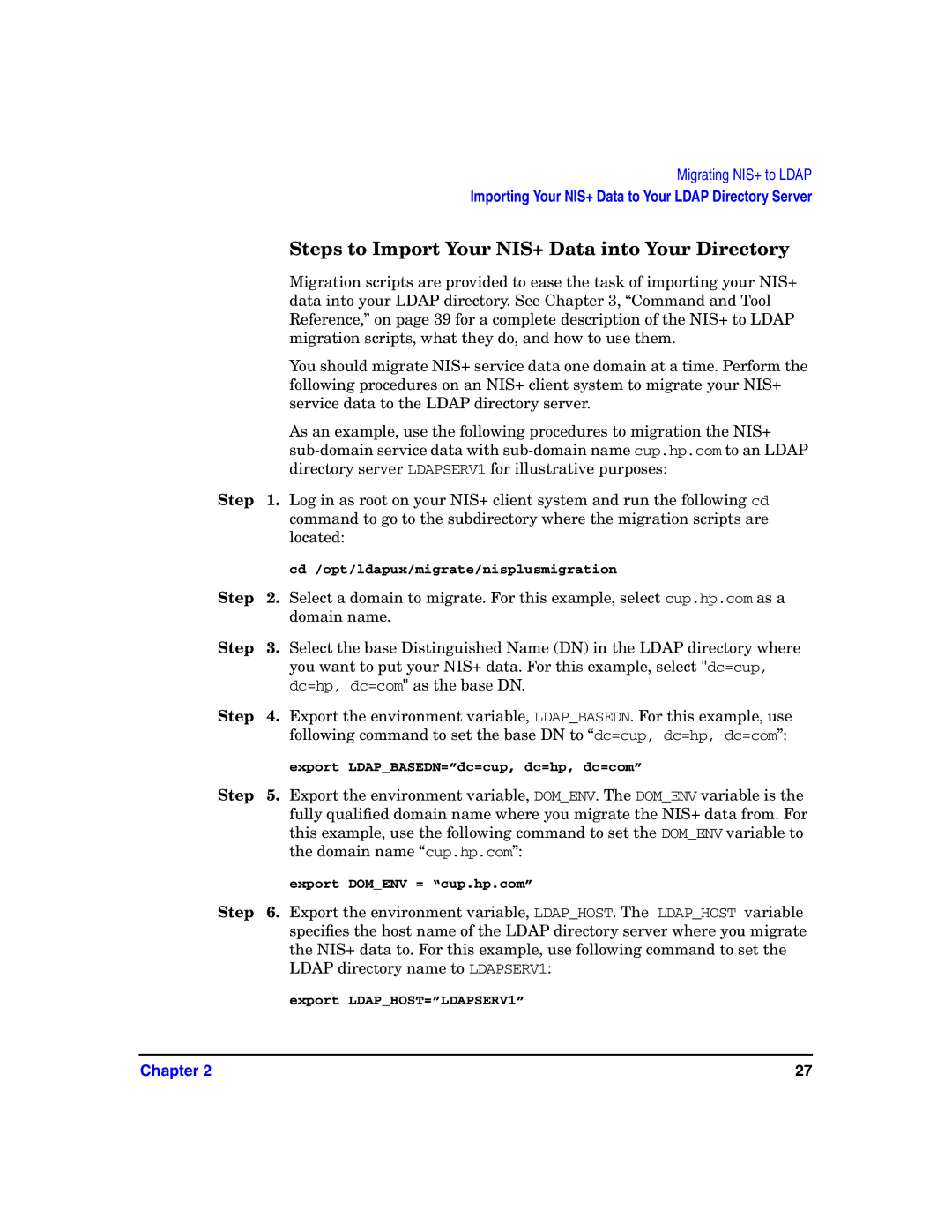Migrating NIS+ to LDAP
Importing Your NIS+ Data to Your LDAP Directory Server
|
| Steps to Import Your NIS+ Data into Your Directory |
|
| Migration scripts are provided to ease the task of importing your NIS+ |
|
| data into your LDAP directory. See Chapter 3, “Command and Tool |
|
| Reference,” on page 39 for a complete description of the NIS+ to LDAP |
|
| migration scripts, what they do, and how to use them. |
|
| You should migrate NIS+ service data one domain at a time. Perform the |
|
| following procedures on an NIS+ client system to migrate your NIS+ |
|
| service data to the LDAP directory server. |
|
| As an example, use the following procedures to migration the NIS+ |
|
| |
|
| directory server LDAPSERV1 for illustrative purposes: |
Step | 1. | Log in as root on your NIS+ client system and run the following cd |
|
| command to go to the subdirectory where the migration scripts are |
|
| located: |
|
| cd /opt/ldapux/migrate/nisplusmigration |
Step | 2. Select a domain to migrate. For this example, select cup.hp.com as a | |
|
| domain name. |
Step | 3. | Select the base Distinguished Name (DN) in the LDAP directory where |
|
| you want to put your NIS+ data. For this example, select "dc=cup, |
|
| dc=hp, dc=com" as the base DN. |
Step | 4. | Export the environment variable, LDAP_BASEDN. For this example, use |
|
| following command to set the base DN to “dc=cup, dc=hp, dc=com”: |
|
| export LDAP_BASEDN=”dc=cup, dc=hp, dc=com” |
Step | 5. Export the environment variable, DOM_ENV. The DOM_ENV variable is the | |
|
| fully qualified domain name where you migrate the NIS+ data from. For |
|
| this example, use the following command to set the DOM_ENV variable to |
|
| the domain name “cup.hp.com”: |
|
| export DOM_ENV = “cup.hp.com” |
Step | 6. | Export the environment variable, LDAP_HOST. The LDAP_HOST variable |
|
| specifies the host name of the LDAP directory server where you migrate |
|
| the NIS+ data to. For this example, use following command to set the |
|
| LDAP directory name to LDAPSERV1: |
export LDAP_HOST=”LDAPSERV1”
Chapter 2 | 27 |
